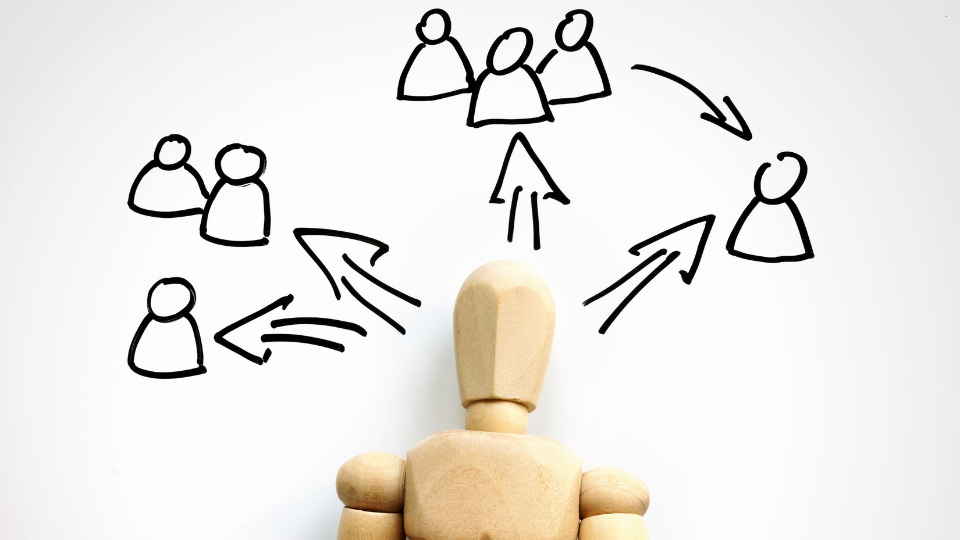In today’s fast-paced world, the art of truly listening is often overlooked. Yet, the power of active listening can’t be underestimated. It’s not just about hearing words, and it’s about understanding and interpreting them. Active listening is a cornerstone in training and people development, enabling individuals to foster better relationships, both professionally and personally. Let’s find out what active listening is, why active listening is essential in the world of work, and tips for implementing active listening!
What is Active Listening?
Active listening is more than just hearing words spoken by someone else. It’s a conscious effort to understand and interpret what the speaker is conveying fully. Unlike passive listening, where we might only catch the main points, active listening involves immersing oneself in the conversation, seeking to grasp the nuances and underlying messages.
This skill requires practice but can significantly enhance one’s ability to connect with others and retain vital information. In the realm of training and people development, active listening stands out as a foundational skill. It’s not just about capturing main points for later recall; it’s about fostering genuine connections and enhancing communication.
By honing this skill, individuals can elevate their training sessions, making them more interactive and practical. The essence of active listening lies in its ability to bridge gaps, making it an indispensable tool in people development initiatives.
Why is Active Listening Important?
In professional settings, especially in the workplace, active listening plays a pivotal role. It’s a testament to your respect and value for team members and their insights. During brainstorming sessions or meetings, actively listening can help you absorb and process information more effectively, leading to more meaningful contributions to discussions. Furthermore, it fosters open communication and camaraderie, essential elements for a harmonious and productive work environment.
Active listening becomes even more crucial in the broader scope of training and people development. It’s not just a communication tool; it’s a bridge to deeper understanding and collaboration. Active listening ensures that training sessions are not just one-sided lectures but interactive exchanges where every participant feels heard and valued. This dynamic interaction can lead to more effective training outcomes and a more cohesive team. By prioritizing active listening in training and people development initiatives, organizations can foster a culture of mutual respect and continuous learning.
Tips for Active Listening
In an age where distractions are rampant, and multitasking is the norm, the significance of active listening cannot be overstated. Whether in casual conversations or structured training sessions, the ability to listen actively can transform interactions, leading to more precise understanding and stronger connections. Especially in the realm of training and people development, where the transfer and retention of knowledge is paramount, mastering the art of active listening is essential.
Minimize Distractions
To truly practice active listening, it’s crucial to eliminate potential distractions. This could mean turning off your phone, closing unnecessary tabs on your computer, or even choosing a quiet environment for conversations. In training and people development sessions, minimizing distractions ensures that the learning process is effective and that participants are fully engaged.
Engage with the Speaker
Your body language can convey your attentiveness. Simple gestures like nodding, maintaining eye contact, or offering verbal affirmations can make the speaker feel valued and understood. In training scenarios, this engagement can foster a more interactive and collaborative environment, enhancing the overall learning experience.
Stay Present
Instead of formulating a response while the other person is still speaking, focus entirely on their words. This not only shows respect but also ensures you’re getting the entire message. In the context of training and people development, being present ensures that you absorb the material being taught, leading to better retention and application of knowledge.
Take Notes
Jotting down key points can help reinforce what’s being said and provide a reference for later. In training sessions, note-taking can be an invaluable tool, allowing participants to revisit essential concepts and discussions.
Show Empathy
Active listening is also about understanding the emotions and sentiments behind the words. Especially in people’s development, showing empathy can build trust and foster a supportive environment where individuals feel safe to express their thoughts and concerns.
Active listening is more than just a skill; it’s a commitment to understanding and valuing the perspectives of others. By applying these tips, individuals can elevate their communication prowess, ensuring that every interaction is meaningful and productive. In the context of training and people development, active listening becomes a catalyst for growth, fostering environments where learning thrives and relationships flourish.
Ready to make a real impact on your business productivity? Dive into Klique.id’s transformative training & people development services. Don’t just train; transform with Klique.id!
Reference:







